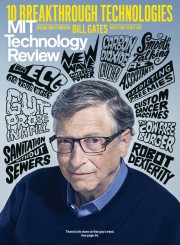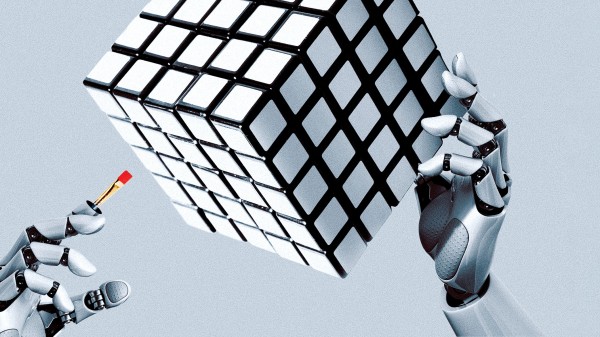10 Breakthrough Technologies 2019
How we’ll invent the future, by Bill Gates
We asked Gates to choose this year’s list of inventions that will change the world for the better.
Iwas honored when MIT Technology Review invited me to be the first guest curator of its 10 Breakthrough Technologies. Narrowing down the list was difficult. I wanted to choose things that not only will create headlines in 2019 but captured this moment in technological history—which got me thinking about how innovation has evolved over time.
My mind went to—of all things—the plow. Plows are an excellent embodiment of the history of innovation. Humans have been using them since 4000 BCE, when Mesopotamian farmers aerated soil with sharpened sticks. We’ve been slowly tinkering with and improving them ever since, and today’s plows are technological marvels.

This story is part of our March/April 2019 Issue
See the rest of the issueSubscribe
But what exactly is the purpose of a plow?
As well as his introductory essay, read Bill Gates’s conversation with editor in chief Gideon Lichfield. Below are his picks for the 10 Breakthrough Technologies.
Robot dexterity

NICOLAS ORTEGA
Robot dexterity
- Why it mattersIf robots could learn to deal with the messiness of the real world, they could do many more tasks.
- Key PlayersOpenAI
Carnegie Mellon University
University of Michigan
UC Berkeley - Availability3-5 years
Robots are teaching themselves to handle the physical world.
For all the talk about machines taking jobs, industrial robots are still clumsy and inflexible. A robot can repeatedly pick up a component on an assembly line with amazing precision and without ever getting bored—but move the object half an inch, or replace it with something slightly different, and the machine will fumble ineptly or paw at thin air.
But while a robot can’t yet be programmed to figure out how to grasp any object just by looking at it, as people do, it can now learn to manipulate the object on its own through virtual trial and error.
One such project is Dactyl, a robot that taught itself to flip a toy building block in its fingers. Dactyl, which comes from the San Francisco nonprofit OpenAI, consists of an off-the-shelf robot hand surrounded by an array of lights and cameras. Using what’s known as reinforcement learning, neural-network software learns how to grasp and turn the block within a simulated environment before the hand tries it out for real. The software experiments, randomly at first, strengthening connections within the network over time as it gets closer to its goal.
It usually isn’t possible to transfer that type of virtual practice to the real world, because things like friction or the varied properties of different materials are so difficult to simulate. The OpenAI team got around this by adding randomness to the virtual training, giving the robot a proxy for the messiness of reality.
We’ll need further breakthroughs for robots to master the advanced dexterity needed in a real warehouse or factory. But if researchers can reliably employ this kind of learning, robots might eventually assemble our gadgets, load our dishwashers, and even help Grandma out of bed. —Will Knight


No comments:
Post a Comment